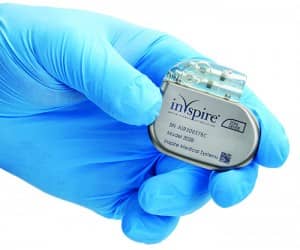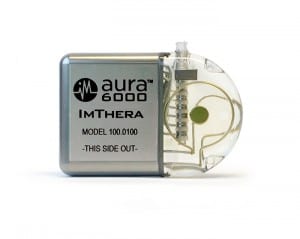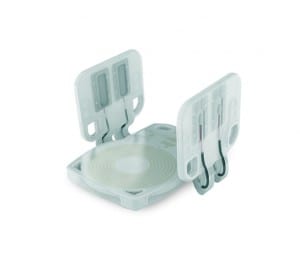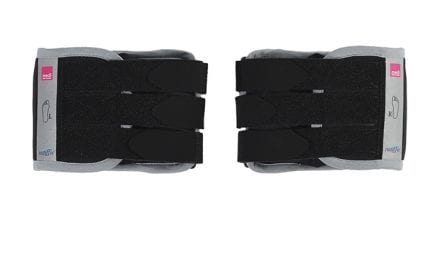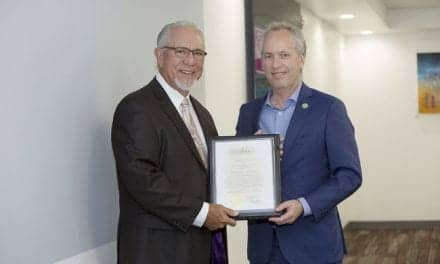Inspire Medical, Respicardia, LivaNova, and Nyxoah share the latest data on their devices.
FDA APPROVED
Inspire Medical Systems Inc Inspire Upper Airway Stimulation
Information source: Howard Green, vice president of marketing
FDA status: FDA approved in April 2014.
Size: 15 cc
Implant location: Inserted just under the skin of the neck and chest through 3 incisions.
Lead location: The sensing lead is placed in the intercostal muscle area; the stimulation lead is wrapped around the hypoglossal nerve (which controls the muscles and movements of the tongue).
How it works: As a patient sleeps, Inspire senses when they breathe in and delivers mild stimulation nudging the tongue forward, opening the airway. The patient uses a sleep remote to turn Inspire on when they go to sleep and off when they wake up.
Treats: Moderate-to-severe obstructive sleep apnea. AHI between 15 and 65.
Titration: Inspire is turned on about a month after it’s implanted. The patient is given a sleep remote and initial settings are established. The patient uses Inspire at home for 2-3 months and adjusts the amplitude using the remote to find a level that gives them comfortable, restful sleep. After this, the patient has an overnight sleep study where stimulation levels can be adjusted to optimize patient outcomes.
Future titrations: The vast majority of patients find stable settings after one lab titration. Inspire is customizable so any adjustments can be made simply in the physician’s office.
Overall efficacy: A recent peer-reviewed publication on the ADHERE Registry concluded that: median patient AHI was reduced from 34.0 to 7.0 events/hour; quality of life: ESS was reduced from 12 to 7; after 12 months, patients used Inspire 5.7 hours per night; 94% of physicians rated improvement in patients after Inspire implant. Patient-reported response to therapy experience: 94% stating they would undergo Inspire implant again; 96% of patients reported they would recommend Inspire to family and friends; 94% of patients reported they were overall satisfied with Inspire therapy.
Efficacy by demographic: Men and women within the FDA-approved AHI range (15-65) benefit equally from Inspire therapy. The ADHERE registry concluded: Inspire is an effective option for OSA patients age 65 or older, with significant outcomes and fewer complications than traditional sleep surgery.
Compliance monitoring: The Inspire system collects adherence data which can be viewed on Inspire Cloud, similar to how CPAP compliance is monitored.
Long-term outcomes: The STAR Clinical Trial data were published in the January 9, 2014 edition of the New England Journal of Medicine. The significant improvements and reductions measured after 1 year were sustained over a 5-year follow-up period. The outcomes include: 79% reduction in AHI events; significant improvements in FOSQ score; significant reductions in daytime sleepiness as measured by the ESS; 90% of bed partners reported soft or no snoring for their partner using Inspire, as compared to only 17% of bed partners at baseline.
Third-party payer status: Inspire is covered with most Blue Cross Blue Shield franchises, Aetna, Medical Mutual, and many other payers. In total, there are positive coverage policies from commercial US insurers covering over 80 million lives.
To find physicians qualified to do the implant surgery: www.inspiresleep.com/doctor-search
Surgeon appointment(s): A patient schedules a consult with an ENT to determine candidacy for Inspire. This includes an exam of the patient’s airway anatomy. If the patient is approved for Inspire, the surgery is scheduled.
Extraction information: Similar to pacemakers, Inspire is expected to be replaced when the battery depletes (~11 years). In rare circumstances, infection or other complications require a device to be removed in a routine outpatient procedure.
Expected developments in the next 12 months: Inspire is launching the Inspire Cloud patient management system, providing sleep physicians with easy access to insights into patients’ therapy usage, outcomes, and adherence.
More information: Strollo PJ, et al. Upper-airway stimulation for obstructive sleep apnea. N Engl J Med. 2014;370:139-49. Heiser C, et al. Post-approval upper airway stimulation predictors of treatment efficacy in the Adhere Registry. European Respiratory Journal. 2019 Jan.
FDA APPROVED
Respicardia remede System
Information source: Robin Germany, MD, chief medical officer
Size: 39 cc (similar size to implantable cardiac defibrillators)
Implant location: The pulse generator is placed under the skin in either the right or left side of the upper chest. In most cases, physicians select the right side as cardiac devices are typically placed in the left side of the upper chest.
Lead location: The stimulation lead is placed transvenously in either the left pericardiophrenic vein or right brachiocephalic vein (in close proximity to the phrenic nerve for unilateral stimulation of the diaphragm). In some cases, physicians also place a sensing lead to monitor respiration.
How it works: During sleep, the remedē System delivers low amplitude electrical stimulation pulses to the phrenic nerve, contracting the diaphragm and restoring a normal breathing pattern and volume. The device turns on automatically each night.
Treats: Moderate to severe central sleep apnea in adult patients. This is usually defined as an AHI ? 15 events/hr with predominantly central events. In the pivotal trial, the mean AHI was 46 events/hr and the mean central apnea index was 28 events/hr.
Titration: The system is typically activated one month after implant. During this month, the device gathers data about the patient’s sleep habits (sleeping patterns, positional data, and nighttime respiration). Then the patient returns for activation, during which the device is individually programmed using the data. The device then auto-titrates over the next 4–6 weeks. This gives the patient time to acclimate to the therapy. A sleep study may be administered after titration to assess efficacy and/or direct the physician toward additional device programming to optimize results.
Future titrations: Physicians typically perform device checks 2 to 4 times per year. Diagnostic information (such as nighttime respiration, sleeping patterns, and the number of hours of delivered therapy) along with patient feedback can be used during an office visit to adjust device settings or program the device’s auto-titration, which allows for therapy adjustments for changing patient needs over time.
Overall efficacy: The remedē System pivotal trial met its primary endpoint, percentage of subjects demonstrating a ?50% reduction in AHI, and all 7 secondary endpoints, comprehensively demonstrating improvements in sleep metrics, sleep quality, and quality of life. The remedē System is the only CSA treatment to demonstrate significant improvements in arousals, percent of REM sleep, or quality of life in a randomized trial (Costanzo MR, et al. Lancet. 2016;388:974-82. Costanzo MR, et al. Am J Cardiol. 2018;121:1400-18). 88% of patients demonstrated decreased apnea and hypopnea events, with a mean reduction of 81% in the central apnea index from baseline; 79% of patients reported a quality of life improvement; 95% of patients reported they would “elect to have the medical procedure again”; 91% freedom from serious adverse events; and 97% implant success rate.
Efficacy by demographic: Various subgroups were analyzed following the pivotal trial demonstrating treatment effects were consistent across subgroups. There are less women than men with CSA, but efficacy was the same in both men and women. Similar efficacy was seen when separated by age, including those over age 65. There was no difference in efficacy in patients with an AHI in either the moderate or severe range or in patients with atrial fibrillation. In light of the limited treatment options for patients with heart failure and CSA, Costanzo et al. showed in a post hoc analysis that the heart failure subgroup responded similarly to the non-heart failure cohort with regard to safety and efficacy (Constanzo MR, et al, European Journal of Heart Failure. 2018; doi:10.1002/ejhf.131).
Compliance monitoring: The system activates automatically each night, alleviating most compliance concerns. It retains approximately 30 days of data on nighttime respiration, sleeping patterns (positional, activity, etc), and hours of delivered therapy.
Long-term outcomes: Outcomes data has been published showing 6-, 12-, and 18-month results, and we expect our 24- and 36-month data to be published in mid-2019. Observed safety and efficacy have been consistent over time. We are following patients from the remedē System pivotal trial out to 5 years.
Third-party payer status: Aetna was the first private payer to cover the remedē System in early 2018. Also in 2018, CMS granted the remedē System a Transitional Pass-through Payment. The remedē
System is also included on the Federal Supply Schedule for the VA. Until broad coverage is established, the remedē System is being reviewed by payers on a case-by-case basis.
To find physicians qualified to do the implant surgery: www.respicardia.com (list of current implant sites)
Surgeon appointment(s): This can vary, but the minimum visits include a follow-up visit approximately one month after the procedure to activate and begin auto-titration of the therapy. In most cases, at least one additional appointment would be needed in the next 3 months to assess the device diagnostics and optimize programming. These follow-up visits can be done in either the sleep clinic or with the implanting cardiologist.
Extraction information: Like a cardiac pacemaker, when the battery of the device nears expiration an electrophysiologist would replace the implanted pulse generator, requiring the previously implanted device to be extracted—a common, routine procedure. Occasionally, one or more of the leads also need to be replaced. While the experience and implant duration here is limited, we have thus far seen almost all extracted leads come out safely with simple traction. A small number required extraction techniques and instrumentation similar to cardiac pacemaker leads. Patients typically go home the morning after the extraction procedure.
Expected developments in the next 12 months: The focus will be working with 30-40 new centers to build out their sleep and cardiology suite of services to include the remed? System. There will also be some exciting advances in clinical and product development. New clinical data is expected to be published including 3-year follow-up from the pivotal trial and a meta-analysis combining the pilot and pivotal patient populations. Additionally, a multi-center, prospective, post-market trial is beginning enrollment now, seeking approximately 500 subjects in both the United States and Europe to collect additional safety and effectiveness data. Finally, the next generation of the system is underway, but we have not released a projected availability date.
Additional information: The remedē system activates the diaphragm to generate negative pressure, similar to how people breathe naturally. This is in contrast to the positive pressure generated from mask-based therapies. Users are highly compliant, as the device activates automatically each night when three conditions are met: 1) it is within the patient’s designated sleeping hours, 2) the patient is in a reclined position, and 3) the patient is not moving. The patient’s body is the controller—the patient can roll over or sit up to suspend therapy; the device will reactivate once the patient is still again.
A doctor will need to evaluate the patient’s condition to determine if the remedē System is appropriate. Patients will not be able to have an MRI or diathermy (special heat therapies) if the remedē System is implanted. The remedē System may be used with another stimulation device such as a heart pacemaker or defibrillator; special testing will be needed to ensure the devices are not interacting. As with any surgically implanted device, there are risks related to the surgical procedure itself which may include, but are not limited to, pain, swelling, and infection. Once the therapy is turned on, some patients may experience discomfort from stimulation and/or from the presence of the device. The majority of these events are resolved either on their own or by adjusting the therapy settings. The remedē System may not work for everyone. There are additional risks associated with removing the system. If it is decided to remove the system, another surgery will be required. Be sure to understand all of the risks and benefits associated with the implantation of the remed? System.
The remedē System is contraindicated for use in patients with an active infection or patients known to require magnetic resonance imaging (MRI). See the Instructions for Use for complete information regarding the procedure, indications for use, contraindications, warnings, precautions, and potential adverse events.
More information: Costanzo MR, et al. Transvenous neurostimulation for central sleep apnoea: a randomised controlled trial. Lancet. 2016;388:974–82.
INVESTIGATIONAL
LivaNova Aura 6000 (LivaNova acquired ImThera in 2018)
Information source: John Webb, vice president, sleep apnea
FDA status: In clinical trials
Size: 11 cc volume; 0.8 cm thickness; 16 g weight
Implant location: ~4 cm below the clavicle
Lead location: A lead with cuff is placed proximally around the hypoglossal nerve before the nerve branches.
How it is designed to work: The Aura6000, a fully implantable device, helps treat OSA by delivering mild stimulation to the tongue during sleep, hence significantly reducing or eliminating sleep apnea events.
Hopes to treat: Obstructive sleep apnea. AHI ranges in clinical trials are 20 to 65.
Anticipated titration: Settings are optimized at a titration visit following implantation.
Anticipated future titrations: Settings can be optimized, as needed, over the course of the implantation.
No response to other questions asked due to the device being in clinical trials.
INVESTIGATIONAL
Nyxoah Genio system
Information source: Rémi Renard, vice president, therapy development and education
FDA status: Working toward FDA approval. The Genio system received EU CE Mark approval in early 2019.
Implant location: The Genio is implanted in the chin area through a minimally invasive surgery. It sits like “a saddle on a horse” on the genioglossus muscle; its stimulation electrodes face both branches of the target hypoglossal nerve.
Lead location: The Genio is leadless. The tiny neurostimulator is powered by an external source of energy. Every night, when the user goes to bed, he/she positions the activation chip under his/her chin through an adhesive disposable patch. In the morning, the patient needs to remove and discard the patch and put the activation chip on the charging unit.
How it is designed to work: By stimulating bilaterally the hypoglossal nerve in a cyclical manner, the Genio system helps maintain the upper airway open and prevent apnea and hypopnea events.
Hopes to treat: Moderate to severe OSA. AHI range between 15 and 65 events/hour.
Anticipated titration: Similar to other hypoglossal nerve stimulation systems, the Genio system is titrated during the first months after implantation. A wide range of parameters will be adjusted during polysomnography nights to deliver optimal therapeutic outcomes.
Anticipated future titrations: The stimulation parameters can be adjusted any time.
Overall efficacy: The BLAST OSA study is pending publication in a medical journal, so detailed data can currently not be shared. Patients from the BLAST OSA study show a major improvement in their sleep apnea symptoms (AHI and ODI) and their quality of life.
Expected compliance monitoring: The activation chip integrates features allowing for monitoring of nightly compliance.
Expected developments in the next 12 months: Nyxoah is focusing on gathering additional clinical evidence on the Genio system, initiating European market development activities, and continuously working on technology development to improve the therapy efficiency and patient quality of life.
Sree Roy is editor of Sleep Review.
Information in this update submitted by neurostimulator marketers. Sleep Review strives for accuracy but cannot be held responsible for claims made by marketers. Marketers were not charged to have their device update published. All neurostimulators may not be included. E-mail sroy[at]medqor.com if your device was not included in this update but should be considered for future updates.


